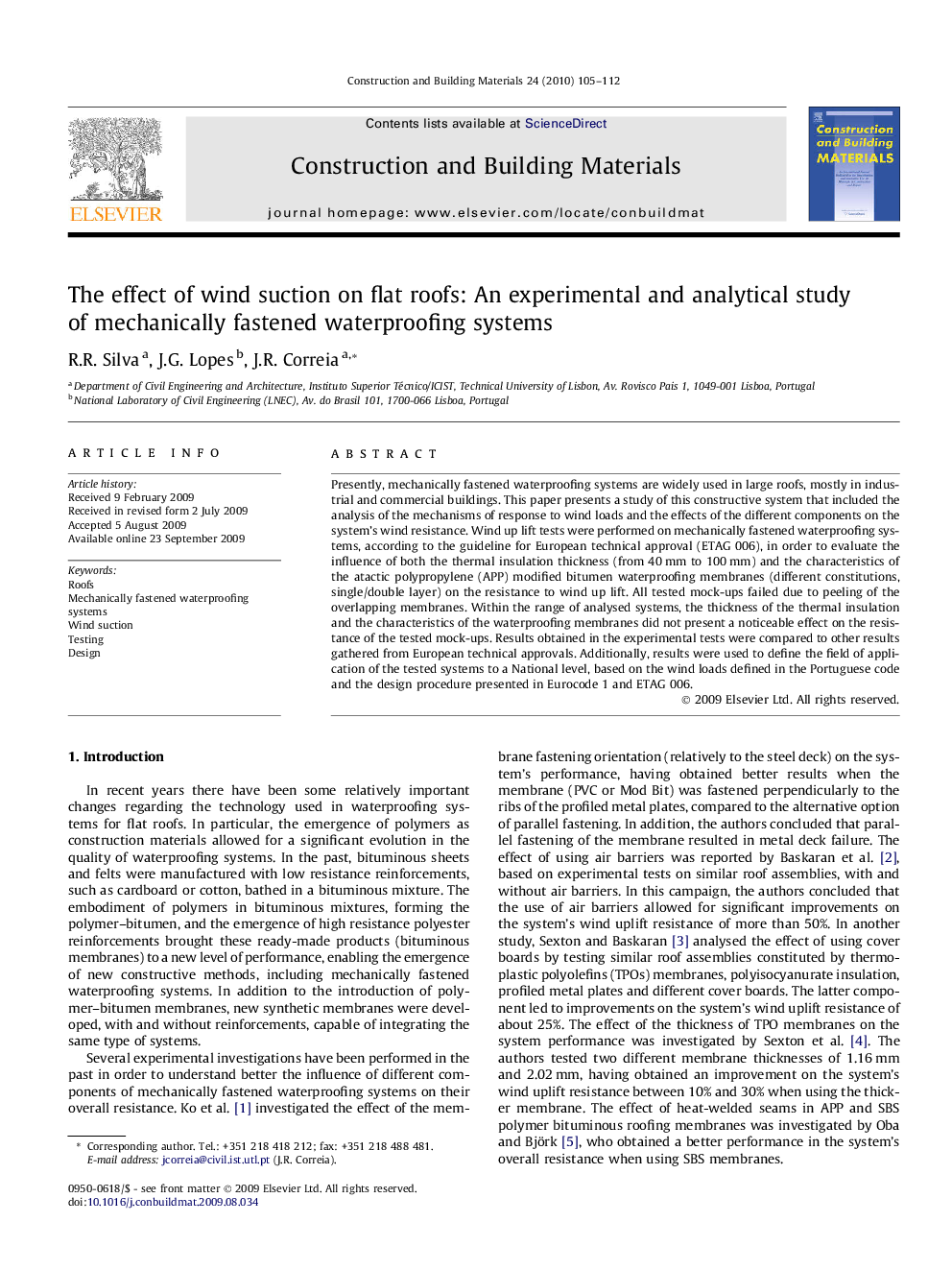| Article ID | Journal | Published Year | Pages | File Type |
|---|---|---|---|---|
| 260422 | Construction and Building Materials | 2010 | 8 Pages |
Presently, mechanically fastened waterproofing systems are widely used in large roofs, mostly in industrial and commercial buildings. This paper presents a study of this constructive system that included the analysis of the mechanisms of response to wind loads and the effects of the different components on the system’s wind resistance. Wind up lift tests were performed on mechanically fastened waterproofing systems, according to the guideline for European technical approval (ETAG 006), in order to evaluate the influence of both the thermal insulation thickness (from 40 mm to 100 mm) and the characteristics of the atactic polypropylene (APP) modified bitumen waterproofing membranes (different constitutions, single/double layer) on the resistance to wind up lift. All tested mock-ups failed due to peeling of the overlapping membranes. Within the range of analysed systems, the thickness of the thermal insulation and the characteristics of the waterproofing membranes did not present a noticeable effect on the resistance of the tested mock-ups. Results obtained in the experimental tests were compared to other results gathered from European technical approvals. Additionally, results were used to define the field of application of the tested systems to a National level, based on the wind loads defined in the Portuguese code and the design procedure presented in Eurocode 1 and ETAG 006.
